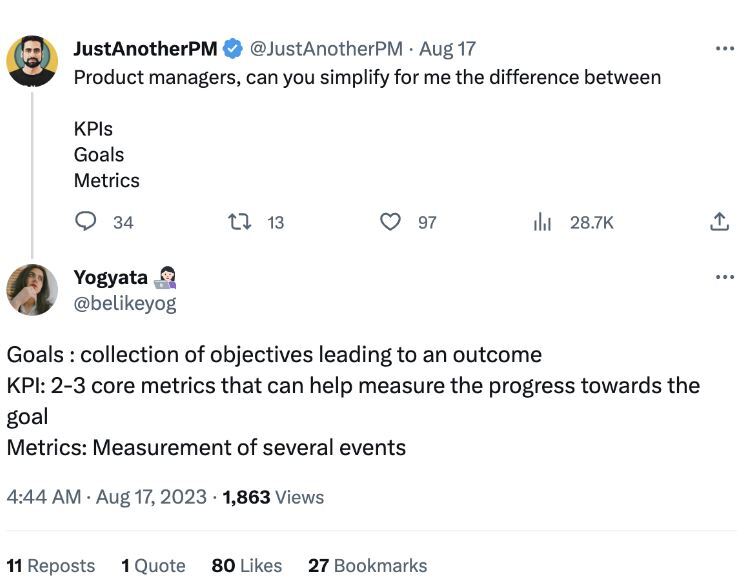How platform teams can achieve ambitious goals

Part 3
Goals give us something to reach for and help us grow. While it's important that they're ambitious, we need to make sure they're realistic and achievable.
Part 1: The importance of buy-in from upper management
Part 2: Establishing a platform engineering organization
Part 3: How platform teams can achieve ambitious goals
Part 4: A mantra for platform teams to succeed
Part 5: Navigating the product mindset in platform teams
Part 6: Measuring success beyond numbers in platform teams
Part 7: Communicating achievements and challenges in platform teams
Aligning with middle and upper management
1. Setting goals that align
Encouraging platform teams to set their own goals not only fosters a culture of ownership but also helps to make sure they're fully vested in the outcomes.
Top tip: Platform teams should make sure that any goals they set align with those of the chief technology officer (CTO). After all, it’s the CTO's responsibility to oversee and drive technology strategies that benefit the business.
2. Business-centric impact
Goals shouldn't be insular. It’s not enough for the platform team to achieve something remarkable if it doesn’t go beyond their bubble.
Regardless of whether goals are set by DevOps teams, project managers, or platform engineering teams, they should align with broader business objectives.
3. Outcomes over output
In the rush to produce and deliver, it's easy to focus on the sheer volume of output. However, the emphasis should be on outcomes. It's not solely about how much you do but the difference it makes. The real value lies in the beneficial changes your work brings about.
4. FAST goals
Goals shouldn't be static, forgotten statements. They should be frequently discussed, keeping them top-of-mind, relevant, and ambitious, pushing the team out of their comfort zone. At the same time, they must be specific, giving clear direction, and, of course, transparent, ensuring everyone understands and is on the same page.
5. KPIs, goals, and metrics
Let’s break it down in more detail:
- Key performance indicators (KPIs): These are the critical indicators of progress towards an intended goal. Think of KPIs as vital signs that the business is healthy and headed in the right direction.
- Goals: These are broader visions of what you want to achieve. They give purpose and direction, acting as the North Star that guides all activities.
- Metrics: These are specific numbers or quantities that represent progress towards goals. They provide actionable insights and are the tools to measure specific aspects of performance.
All of these connect data with business value. Setting ambitious but achievable goals requires a balance of empowerment, alignment, and clarity. In platform engineering, the emphasis is not just on setting these goals but on ensuring they bring about meaningful change.
Through collaboration, frequent discussions, and a keen understanding of KPIs, goals, and metrics, platform teams can create a roadmap for impactful outcomes.
Example goals for platform teams
1. Developer-centric uptime improvement
- Goal: Achieve a 99.9% uptime across all platform services in the next quarter, reducing unplanned outages by 25%.
- Business impact: This will ensure that other teams relying on the platform will experience minimal disruption, enhancing productivity and user trust.
- Metric: Reduction in unplanned outages.
- KPI: Uptime percentage.
2. Platform onboarding efficiency
- Goal: Reduce the time needed to onboard a new team onto the platform by 50% over the next year.
- Business impact: Faster onboarding means teams can start benefiting from platform features sooner, accelerating project timelines.
- Metric: Average onboarding time in days.
- KPI: Number of teams onboarded per month.
3. Scalability enhancement
- Goal: Upgrade the platform infrastructure to handle a 100% increase in user load without latency issues within the next eight months.
- Business impact: As the organization grows, teams won't face performance issues, ensuring smooth operations and maintaining high user satisfaction.
- Metric: Maximum user load that the platform can handle.
- KPI: User feedback on performance and latency issues.
4. Feedback loop fortification
- Goal: Implement a bi-monthly feedback system for all platform users and address at least 80% of actionable feedback within two weeks of receipt over the next quarter.
- Business impact: This ensures that the platform continually evolves based on user needs, fostering a culture of continuous improvement and alignment with user requirements.
- Metric: Number of feedback points addressed.
- KPI: Percentage of feedback addressed within the two-week window.
5. Accelerate deployment speed
- Goal: Reduce deployment time by 30% over the next quarter.
- Business impact: Faster deployment means quicker time-to-market, enabling other departments, such as sales and marketing, to capitalize on new features faster.
- Metric: Track deployment durations over each week.
- KPI: Percentage reduction in average deployment time.
Each of these goals emphasizes business impact, aligns with the CTO's vision of improving the platform's robustness and user experience, and incorporates measurable metrics and KPIs to track progress.
Now that we understand how platform teams can achieve ambitious goals, let's move on to part four of our blog series on how to prioritize, focus, and deliver.
Published:
Updated:


